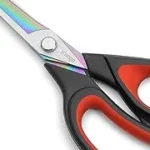Are you wondering why Uber prices have been soaring lately? Well, you’re not alone. Many people have noticed a significant increase in Uber fares recently, leaving them to question why the ride-hailing service has become so expensive. In this article, we will explore the factors contributing to the surge in Uber prices and shed some light on the underlying reasons behind this phenomenon.
The rise in Uber prices can be attributed to various factors. Firstly, increased demand plays a crucial role. As cities reopen and people resume their daily activities, the demand for Uber rides has skyrocketed. With more people relying on Uber for transportation, there is a limited supply of drivers to meet the surge in demand, resulting in higher prices. Additionally, external factors such as fuel prices and surge pricing algorithms also contribute to the overall increase in fares. Join us as we delve deeper into these factors and uncover the complexities of why Uber is currently so expensive.
Why is Uber so expensive right now?
There are several reasons why Uber fares may be higher than usual at the moment. One of the main factors is the concept of surge pricing. When there is high demand for rides and a limited number of drivers available, Uber implements surge pricing to encourage more drivers to come online and meet the demand. Surge pricing is a dynamic pricing model that adjusts the fare rates based on the balance between supply and demand. This means that during peak times or in areas with a high number of requests, prices are increased to incentivize more drivers to pick up passengers. Surge pricing helps Uber maintain a reliable and prompt service during busy periods.
Another reason for the current high prices could be increased operating costs. Uber drivers are responsible for their own expenses, such as fuel, maintenance, insurance, and taxes. If these costs rise, drivers may need to increase their fares to cover these expenses and maintain profitability. Additionally, Uber may also adjust its commission rates, which could impact the overall fare prices. Moreover, external factors such as tolls, taxes, and regulations can also influence the cost of an Uber ride. All these factors combined can contribute to the current higher pricing that you may be experiencing.
Are there any alternatives to Uber that are less expensive?
Yes, there are several alternatives to Uber that may offer lower prices. One of the most well-known alternatives is Lyft. Lyft operates in many of the same cities as Uber and often has similar pricing structures. However, it is worth checking the specific rates in your area to see if Lyft offers a more affordable option. Another alternative is Via, which is a shared ride service that often has lower prices than traditional Uber rides. Via operates in select cities and allows passengers to share a ride with others heading in the same direction, making it more cost-effective for everyone involved.
In addition to Lyft and Via, there may be local ride-hailing services or taxi companies that offer competitive prices. It’s always a good idea to compare prices and read reviews before choosing an alternative to Uber. Keep in mind that pricing can vary depending on factors such as location, time of day, and demand, so it’s essential to check the current rates before making a decision. Taking public transportation or using other forms of shared mobility, such as bike-sharing or carpooling, may also be more cost-effective options depending on your specific needs and location.
How does surge pricing work?
Surge pricing is a dynamic pricing model implemented by Uber to balance the demand for rides with the number of available drivers. When there is high demand for rides in a particular area or during peak times, surge pricing comes into effect. The surge pricing algorithm automatically increases the fare rates to incentivize more drivers to come online and pick up passengers. The surge multiplier determines the increase in pricing, with higher multipliers indicating higher demand and higher fares.
When you request an Uber during surge pricing, you will be notified of the increased fare before confirming your ride. The app displays the surge multiplier, which indicates how much higher the fare will be compared to the standard rate. Surge pricing aims to ensure that there are enough drivers available to meet the demand and provide a reliable service, even during busy times. Surge pricing is temporary and will decrease as the demand for rides decreases or more drivers become available in the area.
Can I avoid surge pricing on Uber?
While surge pricing is a standard feature of Uber, there are a few ways you can try to minimize the impact of higher fares. One option is to wait until the surge subsides. Surge pricing is based on real-time demand, so if you can be flexible with your travel plans, you may be able to avoid surge pricing by waiting for the demand to decrease.
Another way to potentially avoid surge pricing is to consider alternative transportation options. Check if there are any other ride-hailing services operating in your area that may not have surge pricing or have lower surges during peak times. Additionally, you can explore public transportation, carpooling, or even walking if the distance is manageable.
Why do Uber prices vary so much?
Uber prices can vary due to several factors. One of the main factors is the concept of surge pricing, which adjusts the fare rates based on the balance between supply and demand. During peak times or in areas with high demand and limited driver availability, prices are increased through surge pricing to encourage more drivers to come online and pick up passengers. Surge pricing helps maintain a reliable service during busy periods but can result in higher fares.
Other factors that can contribute to price variation include the type of Uber service chosen. Uber offers various service options, such as UberX, Uber Black, and UberXL, each with different features and price points. The distance and duration of the ride also affect the fare, as longer rides will naturally cost more than shorter ones. Additional fees, such as tolls or airport surcharges, may also be added to the final fare. Finally, local factors such as taxes, regulations, and cost of living in different cities or regions can influence the overall pricing structure of Uber.
Can I negotiate the price with an Uber driver?
No, Uber operates on a fixed pricing model, and negotiation of fares with drivers is not allowed. The fare for your Uber ride is determined based on factors such as the distance traveled, duration of the ride, surge pricing (if applicable), and any additional fees. These factors are calculated automatically by the Uber app, ensuring transparency and consistency in pricing for all passengers. Negotiating fares can lead to unfair treatment or discrimination, which goes against Uber’s policies and principles.
If you have any concerns about the fare charged or the quality of the service received, it is recommended to reach out to Uber’s customer support. They can review your trip details and address any issues or questions you may have. Uber has a strong commitment to providing fair and consistent pricing for all passengers, and the fixed pricing model helps ensure a level playing field for both drivers and riders.
Why are some Uber rides more expensive than taxis?
There can be several reasons why some Uber rides may appear more expensive than traditional taxis. One of the main reasons is the dynamic pricing model implemented by Uber called surge pricing. Surge pricing increases the fare rates during periods of high demand to encourage more drivers to come online and meet the demand. This surge pricing feature can make Uber rides more expensive than taxis, especially during peak times or in areas with limited driver availability.
Another factor that can contribute to the higher prices of Uber rides is the convenience and added features that Uber offers compared to traditional taxis. Uber provides a seamless app-based booking system, real-time tracking, upfront pricing, and the ability to choose different service options based on your needs. These added conveniences and features may come at a higher cost compared to a standard metered taxi ride.
Why are Uber prices higher at certain times of the day?
Uber prices are typically higher at certain times of the day due to the concept of surge pricing. Surge pricing is implemented by Uber during periods of high demand or limited driver availability to incentivize more drivers to come online and pick up passengers. Surge pricing helps maintain a reliable and prompt service during busy times, but it can result in higher fares for passengers.
Peak times, such as rush hour or late-night hours when people are leaving bars or events, often experience high demand for rides. During these times, surge pricing may come into effect, increasing the fare rates to balance the supply and demand equation. The surge multiplier determines the increase in pricing, with higher multipliers indicating higher demand and higher fares. As the demand for rides decreases or more drivers become available, the surge pricing decreases, resulting in lower fares.
Why is Uber more expensive in certain cities?
The pricing of Uber can vary from city to city due to several factors. One of the main factors is the cost of living in different cities. Higher cost of living can lead to higher prices for goods and services, including transportation. Additionally, operating costs for drivers, such as fuel, maintenance, insurance, and taxes, can also vary depending on the location, impacting the overall fares.
Local regulations and taxes can also influence the pricing structure of Uber in different cities. Some cities may have higher taxes or additional fees imposed on ride-hailing services, which can contribute to the higher prices. Moreover, the level of competition among ride-hailing services and the availability of drivers can also impact the pricing. In cities with limited driver availability or fewer ride-hailing options, the prices may be higher due to increased demand and limited supply.
Why is Uber more expensive during holidays and special events?
Uber prices can be higher during holidays and special events due to increased demand for rides. During these times, more people are likely to require transportation, leading to a surge in ride requests. To ensure that there are enough drivers available to meet the heightened demand, Uber implements surge pricing. Surge pricing increases the fare rates to incentivize more drivers to come online and pick up passengers.
Additionally, during holidays and special events, there may be road closures, increased traffic, and limited parking options, making ride-hailing services like Uber more attractive to people. The combination of increased demand and limited availability of drivers can result in higher prices during these periods. It’s important to plan ahead and consider the potential for surge pricing when using Uber during holidays or special events.
Why is Uber more expensive in certain neighborhoods?
The pricing of Uber can vary in different neighborhoods due to factors such as demand, distance, and availability of drivers. If a neighborhood has a higher demand for rides compared to the number of available drivers, surge pricing may come into effect, resulting in higher fares. Surge pricing aims to balance the supply and demand equation by increasing the fare rates during periods of high demand.
The distance traveled can also impact the pricing. If a neighborhood is farther away from popular destinations or has limited transportation options, the fares may be higher due to the longer distance traveled. Additionally, some neighborhoods may have higher operating costs for drivers, such as tolls or parking fees, which can be reflected in the final fare.
Why are Uber prices higher during bad weather?
Uber prices can be higher during bad weather due to increased demand and limited driver availability. During inclement weather conditions, more people may opt to use ride-hailing services like Uber instead of walking or using public transportation. This surge in demand can result in surge pricing being implemented to encourage more drivers to come online and pick up passengers.
Moreover, bad weather conditions can make driving more challenging and increase the overall time it takes for drivers to complete rides. This can lead to limited driver availability, further contributing to the higher prices. Surge pricing helps maintain a reliable and prompt service during bad weather by incentivizing drivers to brave the conditions and provide transportation options for passengers.
Why are Uber prices higher at the airport?
Uber prices can be higher at airports due to several factors. One of the main reasons is the additional fees or surcharges imposed by the airport authorities. Airports often charge ride-hailing services a fee for picking up or dropping off passengers, which can be passed on to the passengers as part of the fare. These additional fees can contribute to the higher prices.
Another factor is the high demand for rides at airports. Many people rely on ride-hailing services like Uber to get to and from the airport, leading to increased demand during peak travel times. To balance the supply and demand equation and ensure there are enough drivers available, surge pricing may come into effect, resulting in higher fares. Surge pricing helps incentivize drivers to head to the airport and provide transportation options for passengers.
Why do Uber prices increase during rush hour?
Rush hour is a period of high demand for transportation, as many people are commuting to and from work or school. The increased demand for rides during rush hour can lead to surge pricing being implemented by Uber. Surge pricing helps manage the demand and ensure there are enough drivers available to pick up passengers during busy times.
During rush hour, the surge pricing algorithm automatically increases the fare rates to encourage more drivers to come online and meet the demand. The surge multiplier indicates how much higher the fare will be compared to the standard rate, with higher multipliers indicating higher demand and higher fares. As the rush hour subsides and the demand for rides decreases, the surge pricing decreases, resulting in lower fares.
Why do Uber prices increase during major events?
Uber prices can increase during major events due to the high demand for rides in the vicinity of the event. Major events such as concerts, sports games, or festivals attract a large number of people, many of whom require transportation to and from the venue. The increased demand for rides during these events can lead to surge pricing being implemented.
To balance the supply and demand equation, Uber increases the fare rates through surge pricing, which incentivizes more drivers to come online and pick up passengers. Surge pricing helps ensure that there are enough drivers available to provide transportation options for event-goers. As the demand for rides decreases after the event or when more drivers become available, the surge pricing decreases, resulting in lower fares.
Why is Uber more expensive for long distances?
Uber prices can be higher for long distances due to the increased time and distance traveled. The fare for an Uber ride is determined based on factors such as the distance traveled and the duration of the ride. Longer rides naturally require more time and distance, leading to higher fares compared to shorter rides.
Additionally, operating costs for drivers, such as fuel and maintenance, can increase for longer trips. These increased costs may be reflected in the fare to ensure that drivers are adequately compensated for the additional time and distance traveled. However, it’s worth noting that Uber often provides upfront pricing, allowing passengers to see the estimated fare before confirming the ride, giving them transparency and the option to choose based on their preferences and budget.
Why is Uber more expensive in some countries?
The pricing of Uber can vary from country to country due to several factors. One of the main factors is the cost of living in different countries. Higher cost of living can lead to higher prices for goods and services, including transportation. Additionally, operating costs for drivers, such as fuel, maintenance, insurance, and taxes, can also vary depending on the country, impacting the overall fares.
Local regulations and taxes can also influence the pricing structure of Uber in different countries. Some countries may have higher taxes or additional fees imposed on ride-hailing services, which can contribute to the higher prices. Moreover, competition and availability of drivers can also impact the pricing. In countries with limited driver availability or fewer ride-hailing options, the prices may be higher due to increased demand and limited supply.
Why do Uber prices increase during public holidays?
Uber prices can increase during public holidays due to increased demand for transportation. During public holidays, more people are likely to require rides to travel to family gatherings, events, or holiday destinations. This surge in demand can result in surge pricing being implemented by Uber.
Surge pricing helps manage the demand and ensure there are enough drivers available to pick up passengers during busy periods. By increasing the fare rates, surge pricing incentivizes more drivers to come online and provide transportation options for passengers. As the demand for rides decreases after the public holiday or when more drivers become available, the surge pricing decreases, resulting in lower fares.
Why do Uber prices increase during weekends?
Uber prices can increase during weekends due to higher demand for rides. Weekends are typically a time when people are more likely to go out, socialize, or run errands, leading to increased demand for transportation. To balance the supply and demand equation, surge pricing may be implemented by Uber.
The surge pricing algorithm automatically increases the fare rates during periods of high demand to encourage more drivers to come online and pick up passengers. The surge multiplier indicates how much higher the fare will be compared to the standard rate, with higher multipliers indicating higher demand and higher fares. As the demand for rides decreases or more drivers become available, the surge pricing decreases, resulting in lower fares.
Why are Uber prices higher during peak vacation seasons?
Uber prices can be higher during peak vacation seasons due to increased demand for rides in
Why Uber And Lyft Rides Got So Expensive
In conclusion, the current high pricing of Uber can be attributed to several factors. Firstly, the increased demand for rideshare services has led to surge pricing, where fares are temporarily increased to match the high demand and limited supply of drivers. This surge pricing helps to incentivize more drivers to come online and meet the increased demand, ensuring that riders can still find a ride, albeit at a higher cost.
Secondly, the ongoing COVID-19 pandemic has also impacted Uber’s pricing. With safety measures in place, such as limited passenger capacity and increased cleaning protocols, the number of available rides has decreased. As a result, the reduced supply of rides has driven up the prices temporarily.
Lastly, Uber’s pricing is also influenced by external factors such as traffic congestion and peak travel times. During rush hours or special events, when demand is at its highest, prices tend to be more expensive as Uber aims to balance supply and demand.
Overall, while the current high pricing of Uber may seem expensive, it is important to consider the underlying factors that contribute to these costs. Surge pricing, pandemic-related challenges, and external factors all play a role in determining the fares. As the situation evolves, it is likely that pricing will adjust accordingly, ensuring a balance between affordability for riders and fair compensation for drivers.






